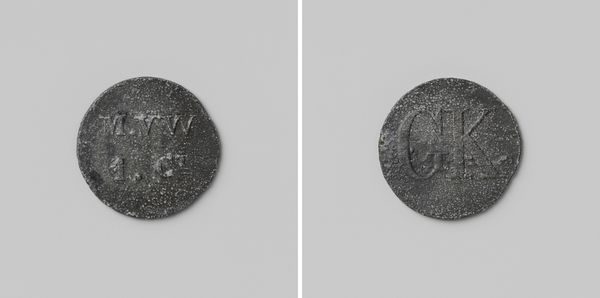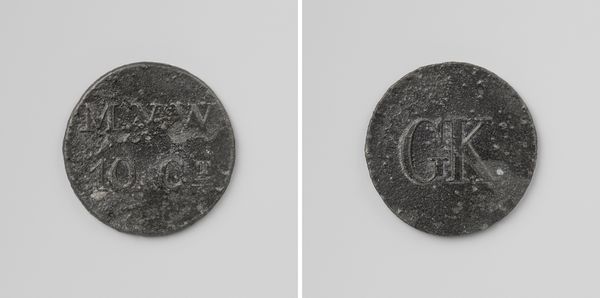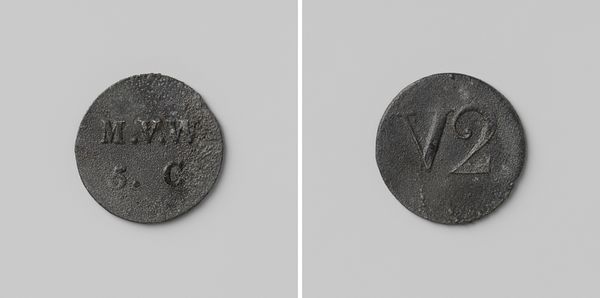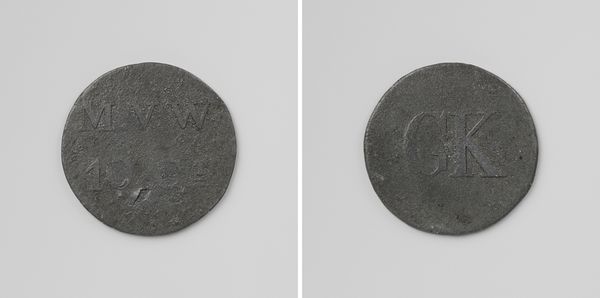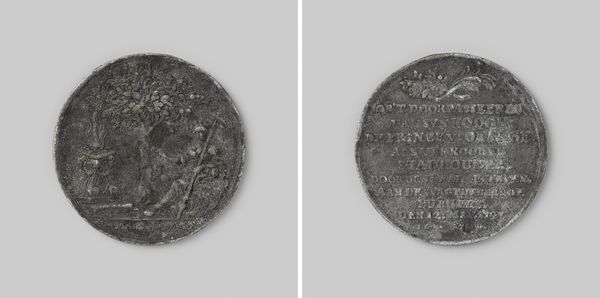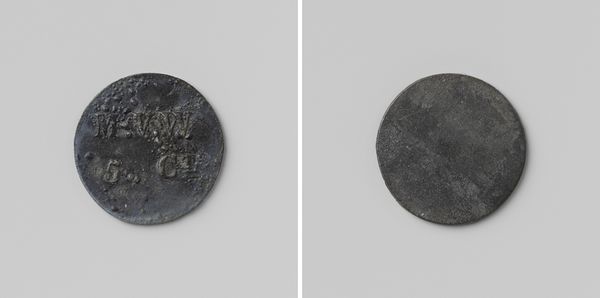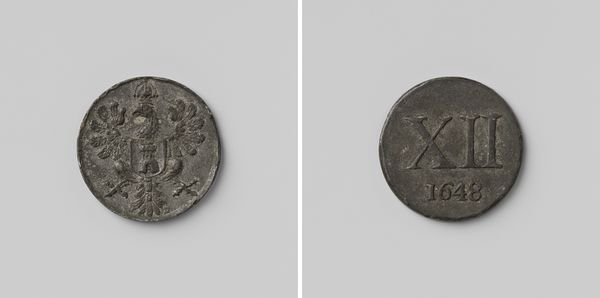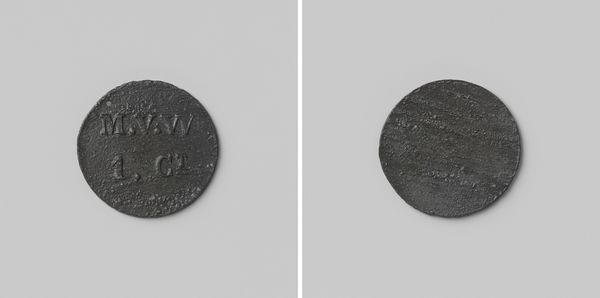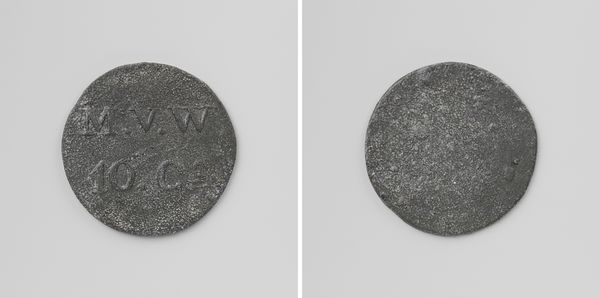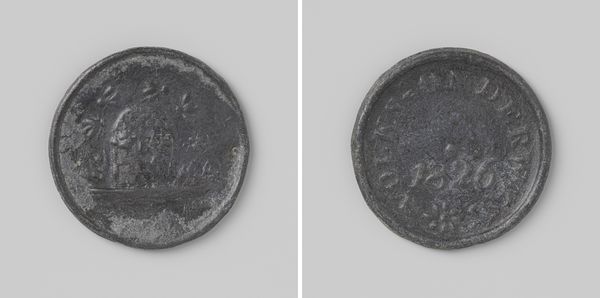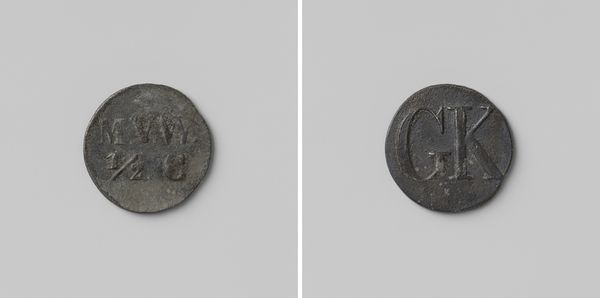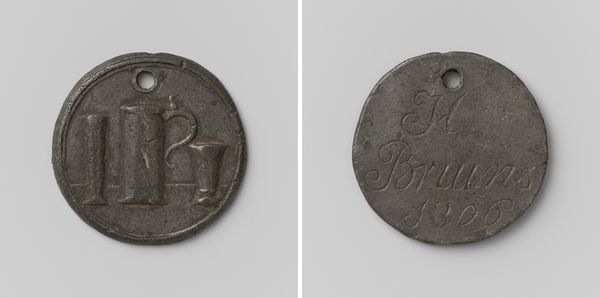
Derde gesticht van de strafkolonie Veenhuizen, huismunt geslagen op last van de Maatschappij van Weldadigheid ter waarde van tien cent 1818 - 1859
0:00
0:00
mixed-media, print, metal, sculpture
#
mixed-media
#
dutch-golden-age
# print
#
metal
#
stoneware
#
sculpture
#
ceramic
Dimensions: diameter 2.5 cm, weight 3.53 gr
Copyright: Rijks Museum: Open Domain
Curator: Here we have a fascinating, though rather grim, piece. This coin, dating from 1818 to 1859, served as internal currency for the Veenhuizen penal colony, the third colony established by the Maatschappij van Weldadigheid or Society of Beneficence. Editor: The immediate impact is its crudeness, isn't it? It feels weighty, solid, and undeniably bleak. The stamped inscriptions lack any finesse; they're almost brutal in their simplicity. What’s that crude text in the center? Curator: Yes, the crudeness speaks volumes. The front of the coin displays "MVW" standing for the "Maatschappij van Weldadigheid", or the Society of Beneficence, with the text ‘10 C.’ underneath, denoting its value of ten cents. Editor: And the back? That “V6” almost looks like it’s branded onto the metal. Does this coin act as a literal mark on the colony's inhabitants? An artistic rendering of how the individuals lost their real identities in their imprisonment. Curator: Precisely. The ‘V6’ likely signifies a specific section or workgroup within the colony. The implementation of such a token economy within Veenhuizen reflected the societal ideals of the time and underscores the paternalistic social control exerted over the incarcerated. It reflects this project of reshaping individuals through a calculated, albeit austere, environment. Editor: Considering that society’s prevailing philosophies about punishment and correction during that era would definitely color our understanding. The repetitive work within the penal colony is evident, mirroring an industrial structure through controlled labor that in turn, visually conveys this in an industrial token. The dull metallic finish speaks of monotony. Curator: Exactly, its design facilitated the regimented environment, incentivized labor within the colony and, just as importantly, it prevented inhabitants from participating in or influencing external economies and society, hence reinforcing their controlled environment. Editor: It strikes me that this humble coin holds immense social significance—a potent relic exposing complex political, philosophical and sociological narratives around marginalization. Curator: Indeed, viewing this piece within a broader historical context lets us trace societal attitudes on poverty, social reform and institutional authority from the nineteenth century into the present. Thank you for unpacking its profound effect alongside me.
Comments
No comments
Be the first to comment and join the conversation on the ultimate creative platform.

